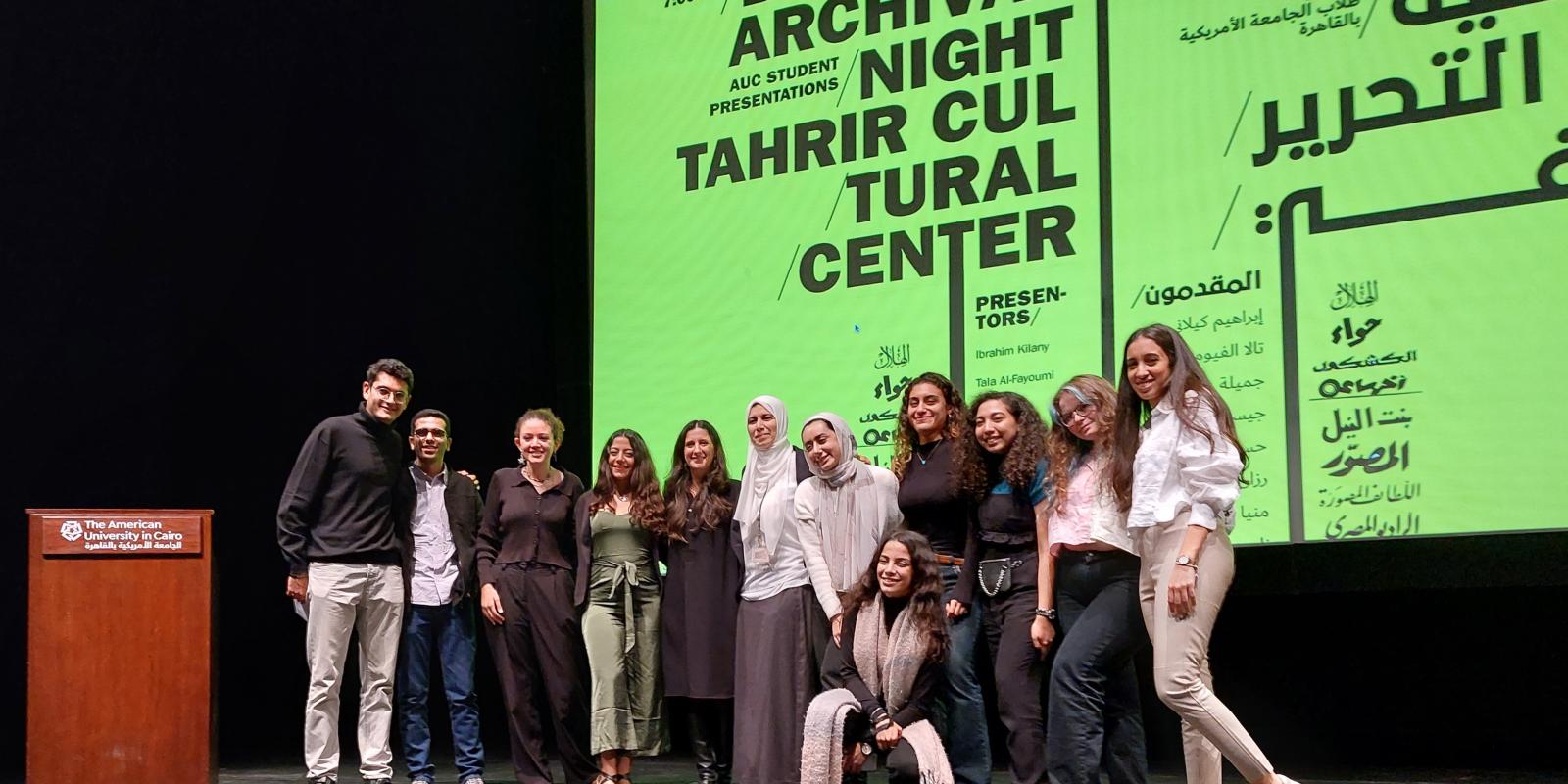
AUC Students Explore Design History Through The Rare Books and Special Collections Library
The evolution of the design of Egyptian historical magazines and newspapers was the topic of the final project assigned to the students of the History of Graphic Design course at The American University in Cairo (AUC) by Bahia Shehab (MA ’09), professor of practice and founder of the program. Shehab has taken her students out of the classroom and into the treasure trove known as the Rare Books and Special Collections Library (RBSCL). Using physical and digital archives of current and former Egyptian magazines, each student examined the history of a particular publication by analyzing its evolving design. Publications included Bint al-Nil, al- Ahram, Hawwa, al- Hilal, Kashqol, Akher Sa’a, al- Musawwar, al- Radio al Masry, al- Gomhuriya, al-Kawakeb and al- Lataif al- Musawara.
“Since we are at AUC and the course is offered at AUC, we thought it is useful that our students interact with the material firsthand in the RBSCL. So, part of the course was to give students the assignment of going into the archive looking into the visual history of one of the publications,” Shehab explained. She added that each one of her students started finding traces of the evolution; how the logo was changing; how the layout was changing; who the founders are and how these designs were affected by the history that was unfolding when the publications were published. “Through visual history, the students learned so much on many different levels and in different ways. It has been a very exciting exercise for me to witness how curious they become.”
Shehab did not orchestrate the project alone. She worked alongside Eman Morgan, assistant director for special projects, electronic media and professional development at the Rare Books and Special Collections Library, who guided students through the archives, showing them different designs, layouts and typography starting from the late nineteenth century until the present. “The students developed their analytical skills to compare designs and fonts before and after the introduction of computers and advanced software,” Morgan said.
The students seemed to enjoy working in the library. Hussein Mostafa, a graphic design junior, studied Bint al-Nil, or Daughter of the Nile, a journal that gave him a window into the mid-19th century Egyptian feminist community and the life of magazine founder Doria Shafik. “Something that inspired me was that when a lot of magazines stopped publishing when things got harsh because of war or a pandemic, Doria Shafik didn’t,” he said, describing her move as a major social political statement. “It was nice. It felt as if I was researching back in the 1980s or 1990s,” said Mostafa. “We’re used to using Wikipedia or the AUC library online.”
Rana El Shaer, a graphic design senior went through the visual history of the magazine al-Kawakeb. El Shaer said it felt good to contribute to an archive that will keep “growing and growing.” She noted her own surprise upon learning that al- Kawakeb published horoscope readings –– a concept she thought had only gained popularity in recent years.
Nada ElKhadem tackled Al-Ahram, Egypt’s largest and most widely circulated newspaper. She used the RBSCL online archives to sift through thousands of editions. “I had to dig deep, so it was really nice to have every single edition provided for me online.” She added, “As you go through the project, you're learning about history and how Al-Ahram evolved as an important publication in the country,” she said. “Exploring the different mediums and the influence behind it all was life changing.”
Shehab and Morgan are optimistic that this project will inspire other students and faculty at AUC to make use of the RBSCL. Also, they hope that AUCians and researchers worldwide continue to make use of the Rare Books and Special Collections digital library, which is open to all.
“The Rare Books and Special Collections Library holds rich and versatile collections — not only books, magazines, maps and photographs, but also artifacts and paintings from prominent artists and architects like Margo Veillon, Van Leo, Hassan Fathy and many others," Morgan said, indicating that the collections are capable of inspiring students from all disciplines.